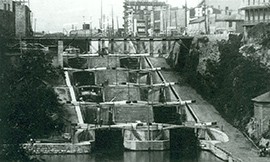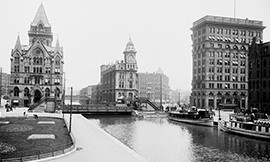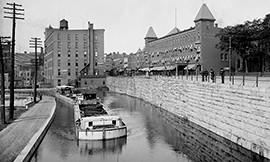Navigating the cultural landscape of remote villages can be significantly transformed by road improvements. SIXT.VN understands the delicate balance between progress and preservation, offering tailored travel solutions that respect and enhance cultural experiences in Vietnam. With improved infrastructure, travelers can access these hidden gems more easily, fostering cultural exchange and economic growth while striving to preserve the unique heritage of these communities.
1. What Are the Primary Benefits of Road Improvements in Remote Areas?
Road improvements in remote areas primarily offer enhanced accessibility, economic opportunities, and improved social services. Better roads enable easier transport of goods and services, promote trade, and connect isolated communities to broader markets, according to a study by the World Bank in 2019. This also facilitates access to education, healthcare, and other essential amenities, thus raising the overall living standards.
Expanding on these benefits, improved roads can lead to increased tourism, which provides additional income for local communities while showcasing their culture and traditions. The improved infrastructure supports logistical efficiency, allowing for more reliable transport schedules and reduced travel times, positively impacting local businesses and residents.
2. How Do Road Improvements Affect Local Economies in Remote Villages?
Road improvements can significantly stimulate local economies by boosting trade, agriculture, and tourism. With better roads, farmers can transport their produce to markets more efficiently, reducing spoilage and increasing profits. A report by the Asian Development Bank in 2020 showed that road upgrades in rural areas of Vietnam led to a 20% increase in agricultural productivity due to improved market access.
Moreover, improved road networks facilitate the development of small businesses and industries within these villages. Local artisans and craftsmen can sell their products to a wider audience, while new businesses can emerge to cater to the increased flow of people and goods. Tourism also flourishes as accessibility improves, creating opportunities for local communities to offer services such as guiding, accommodation, and food, thus diversifying their income sources and improving economic resilience.
3. What Are the Potential Negative Impacts of Road Construction on Remote Cultures?
While road improvements offer numerous benefits, they also carry potential negative impacts on remote cultures, including cultural disruption, environmental damage, and social inequality. The influx of outsiders can lead to the erosion of traditional values and practices, as local communities become exposed to different lifestyles and consumer cultures. Environmental damage from road construction can disrupt ecosystems and displace indigenous populations, leading to the loss of traditional lands and resources.
According to UNESCO, poorly planned infrastructure projects can also exacerbate social inequalities by benefiting certain groups while marginalizing others. It’s crucial to implement sustainable development practices and cultural preservation strategies to mitigate these adverse effects. This includes conducting thorough environmental and social impact assessments, involving local communities in decision-making processes, and promoting responsible tourism that respects local customs and traditions.
4. How Can We Ensure Road Development Respects and Preserves Local Cultures?
Ensuring road development respects and preserves local cultures requires a multi-faceted approach that prioritizes community involvement, cultural sensitivity, and sustainable practices. This involves conducting detailed cultural heritage assessments to identify and protect significant cultural sites and traditions. It also means engaging local communities in every stage of the planning and implementation process, ensuring their voices are heard and their concerns are addressed.
Additionally, implementing cultural awareness training for construction workers and promoting responsible tourism can help minimize cultural disruption. This includes educating visitors about local customs and etiquette, encouraging them to support local businesses, and promoting sustainable practices that minimize environmental impact. By prioritizing cultural preservation and community involvement, road development can be a catalyst for positive change without sacrificing the unique heritage of remote villages.
5. What Role Does Tourism Play in the Transformation of Remote Villages After Road Improvements?
Tourism plays a significant role in transforming remote villages after road improvements by providing economic opportunities and promoting cultural exchange. With improved accessibility, more tourists can visit these villages, bringing in revenue that can support local businesses and infrastructure development. According to the Vietnam National Administration of Tourism, the number of tourists visiting remote areas increased by 30% after road upgrades.
Furthermore, tourism can promote cultural exchange by exposing visitors to local traditions, customs, and lifestyles. This can foster a greater appreciation for cultural diversity and encourage the preservation of local heritage. However, it is crucial to manage tourism sustainably to prevent over-commercialization and cultural commodification. This involves implementing responsible tourism practices, promoting local ownership of tourism businesses, and ensuring that tourism revenue benefits the entire community.
6. What Sustainable Practices Can Minimize the Environmental Impact of Road Construction?
Sustainable practices are essential for minimizing the environmental impact of road construction in remote areas. This includes conducting thorough environmental impact assessments to identify potential risks and implementing mitigation measures to minimize habitat destruction, soil erosion, and water pollution. According to the Environmental Protection Agency (EPA), using eco-friendly construction materials and techniques can significantly reduce the environmental footprint of road projects.
Additionally, implementing erosion control measures, such as planting native vegetation along roadsides, can help stabilize soil and prevent sedimentation. Proper waste management practices, including recycling and proper disposal of construction debris, can also minimize pollution. Furthermore, designing roads that minimize habitat fragmentation and allow for wildlife crossings can help protect biodiversity and ensure the long-term sustainability of ecosystems.
7. How Does Improved Infrastructure Affect Access to Education and Healthcare in Remote Areas?
Improved infrastructure, particularly roads, dramatically enhances access to education and healthcare in remote areas. With better roads, students can travel to schools more easily, reducing absenteeism and improving educational outcomes. A study by the Ministry of Education and Training in Vietnam showed that school attendance rates increased by 25% in remote areas after road improvements.
Similarly, improved roads facilitate access to healthcare services by enabling patients to reach clinics and hospitals more quickly. This is particularly crucial for emergency medical care and maternal health services. Improved transportation also allows healthcare providers to reach remote communities more easily, providing essential medical services and health education. According to the World Health Organization (WHO), road improvements can significantly reduce maternal mortality rates in remote areas by improving access to prenatal and postnatal care.
8. What Are the Challenges in Maintaining Roads in Remote and Mountainous Regions?
Maintaining roads in remote and mountainous regions presents several unique challenges, including harsh weather conditions, difficult terrain, and limited resources. Mountainous areas are prone to landslides, erosion, and flooding, which can damage roads and disrupt transportation. According to the National Center for Atmospheric Research (NCAR), climate change is exacerbating these challenges, leading to more frequent and intense weather events.
Additionally, remote areas often lack the resources and expertise needed to maintain roads effectively. Limited funding, lack of skilled labor, and difficulty in accessing equipment and materials can hinder road maintenance efforts. Addressing these challenges requires innovative solutions, such as using durable and locally sourced construction materials, implementing effective drainage systems, and providing training and resources to local communities for road maintenance.
9. How Can Technology Aid in Planning and Monitoring Road Construction Projects?
Technology plays a crucial role in aiding the planning and monitoring of road construction projects in remote areas. Geographic Information Systems (GIS) can be used to map terrain, identify potential environmental risks, and optimize road alignment. According to Esri, a leading GIS software company, GIS can improve the efficiency of road construction projects by up to 30%.
Remote sensing technologies, such as satellite imagery and drone surveys, can be used to monitor construction progress, detect potential problems, and assess environmental impacts. Building Information Modeling (BIM) can be used to create virtual models of roads, allowing engineers to simulate different scenarios and optimize designs. Furthermore, mobile technology and cloud-based platforms can facilitate communication and collaboration among project stakeholders, improving coordination and transparency.
10. What Policies and Regulations Are Necessary to Ensure Sustainable Road Development?
Ensuring sustainable road development requires a comprehensive set of policies and regulations that prioritize environmental protection, cultural preservation, and community involvement. This includes implementing stringent environmental impact assessment (EIA) regulations that require developers to assess and mitigate potential environmental risks. According to the International Association for Impact Assessment (IAIA), effective EIA processes can significantly reduce the environmental footprint of road projects.
Additionally, policies should promote the use of sustainable construction materials and techniques, such as recycled asphalt and permeable pavement. Regulations should also protect cultural heritage sites and ensure that local communities are consulted and compensated for any impacts on their land and livelihoods. Furthermore, governments should invest in capacity building and provide training to local communities to enable them to participate effectively in road development and maintenance. By implementing these policies and regulations, road development can be a catalyst for sustainable economic growth and social development while preserving the unique heritage of remote villages.
11. How Can SIXT.VN Help Travelers Navigate These Changing Landscapes?
SIXT.VN is dedicated to providing travelers with the resources and services needed to explore Vietnam’s remote regions responsibly and sustainably. We offer tailored travel solutions that respect local cultures and minimize environmental impact, ensuring a meaningful and enriching travel experience.
11.1. Expert Travel Consultation
SIXT.VN offers expert travel consultation services to help travelers plan their trips to remote villages. Our knowledgeable consultants provide up-to-date information on road conditions, local customs, and responsible tourism practices, ensuring a safe and respectful travel experience.
11.2. Reliable Transportation Services
We provide reliable transportation services, including airport transfers and car rentals, making it easy for travelers to access remote regions. Our vehicles are well-maintained and equipped to handle the challenging terrain of mountainous areas, ensuring a comfortable and safe journey.
11.3. Sustainable Tourism Packages
SIXT.VN offers sustainable tourism packages that support local communities and minimize environmental impact. These packages include visits to cultural heritage sites, guided tours led by local experts, and accommodation in eco-friendly lodges and guesthouses.
11.4. Local Partnerships
We partner with local businesses and organizations to promote responsible tourism and support community development. By working with local guides, artisans, and accommodation providers, we ensure that tourism revenue benefits the entire community.
11.5. Cultural Awareness Training
SIXT.VN provides cultural awareness training to travelers, educating them about local customs, etiquette, and responsible tourism practices. This helps to minimize cultural disruption and promote respectful interactions between visitors and local communities.
11.6. Commitment to Sustainability
SIXT.VN is committed to sustainability and responsible tourism practices. We work to minimize our environmental footprint and support local communities, ensuring that future generations can enjoy the unique heritage of Vietnam’s remote regions.
12. What Are Some Examples of Successful Road Improvement Projects That Have Benefited Remote Villages?
Several successful road improvement projects have demonstrated the potential to benefit remote villages while preserving local cultures and minimizing environmental impact.
12.1. The Ho Chi Minh Road, Vietnam
The Ho Chi Minh Road, a major transportation artery in Vietnam, has significantly improved access to remote areas, boosting trade, tourism, and economic development. The project included measures to protect the environment and preserve cultural heritage sites, such as relocating communities away from construction areas and implementing erosion control measures.
12.2. The Karakoram Highway, Pakistan
The Karakoram Highway, one of the highest paved roads in the world, has opened up remote mountain regions in Pakistan to tourism and trade. The project included measures to minimize environmental impact, such as using sustainable construction materials and implementing erosion control measures.
12.3. The Trans-Amazonian Highway, Brazil
While controversial, the Trans-Amazonian Highway has provided access to remote regions of the Amazon rainforest, facilitating economic development and providing essential services to isolated communities. The project included measures to protect indigenous lands and mitigate environmental damage, such as creating protected areas and implementing sustainable forestry practices.
13. How Can Road Improvements Promote Gender Equality in Remote Villages?
Road improvements can promote gender equality in remote villages by improving access to education, healthcare, and economic opportunities for women. With better roads, girls can attend school more easily, reducing gender disparities in education. Improved transportation also allows women to access healthcare services, such as prenatal and postnatal care, improving maternal health outcomes.
Furthermore, road improvements can create economic opportunities for women by enabling them to participate in trade, agriculture, and tourism. Women can sell their products to a wider audience, start their own businesses, and access training and resources to improve their livelihoods. According to UN Women, investing in rural infrastructure, such as roads, can significantly empower women and promote gender equality.
14. What Are the Long-Term Social and Cultural Implications of Road Development?
The long-term social and cultural implications of road development in remote villages are complex and multifaceted. While road improvements can bring numerous benefits, such as economic growth and improved access to services, they can also lead to cultural disruption and social change. The influx of outsiders can expose local communities to different lifestyles and consumer cultures, potentially eroding traditional values and practices.
However, road development can also foster cultural exchange and promote a greater understanding of cultural diversity. By exposing visitors to local traditions and customs, tourism can encourage the preservation of cultural heritage and promote sustainable development. It is crucial to manage road development sustainably, prioritizing community involvement, cultural sensitivity, and environmental protection to ensure that the long-term social and cultural implications are positive and beneficial for all.
15. What Emerging Trends and Innovations Are Shaping the Future of Road Construction in Remote Areas?
Several emerging trends and innovations are shaping the future of road construction in remote areas, including the use of sustainable materials, advanced technologies, and community-based approaches.
15.1. Sustainable Materials
Sustainable materials, such as recycled asphalt, bamboo, and locally sourced aggregates, are increasingly being used in road construction to minimize environmental impact and reduce costs. According to the Sustainable Road Construction Consortium (SRCC), using recycled materials can reduce greenhouse gas emissions by up to 50%.
15.2. Advanced Technologies
Advanced technologies, such as 3D printing, drone surveys, and Building Information Modeling (BIM), are being used to improve the efficiency and accuracy of road construction projects. These technologies can help engineers optimize designs, detect potential problems, and monitor construction progress in real-time.
15.3. Community-Based Approaches
Community-based approaches, which involve local communities in every stage of the planning and implementation process, are becoming increasingly popular in road construction. This approach ensures that local voices are heard, and that road projects are aligned with community needs and priorities.
15.4. Climate-Resilient Infrastructure
Climate-resilient infrastructure is designed to withstand the impacts of climate change, such as extreme weather events and sea-level rise. This includes using durable materials, implementing effective drainage systems, and designing roads that can withstand flooding and erosion.
15.5. Smart Roads
Smart roads incorporate sensors, communication technologies, and data analytics to improve safety, efficiency, and sustainability. This includes using sensors to monitor traffic conditions, detect accidents, and provide real-time information to drivers.
By embracing these emerging trends and innovations, road construction in remote areas can be more sustainable, efficient, and beneficial for local communities.
Road improvements in remote areas hold immense potential to transform lives and economies. As you plan your adventure, remember to explore responsibly with SIXT.VN, where we ensure your journey not only opens doors to new landscapes but also honors and preserves the rich cultures encountered along the way.
Ready to experience the beauty and culture of Vietnam’s remote villages? Contact SIXT.VN today to plan your unforgettable journey!
Address: 260 Cau Giay, Hanoi, Vietnam
Hotline/Whatsapp: +84 986 244 358
Website: SIXT.VN
FAQ: Road Improvements and Remote Cultures
-
How do road improvements affect the daily life of people in remote villages? Road improvements can significantly improve daily life by providing easier access to markets, healthcare, and education, enhancing economic opportunities and overall quality of life.
-
What measures are taken to protect indigenous lands during road construction? Measures include conducting thorough environmental and social impact assessments, consulting with indigenous communities, and implementing mitigation strategies to minimize displacement and protect cultural heritage.
-
How can tourism be managed sustainably in remote villages after road improvements? Sustainable tourism involves promoting responsible travel practices, supporting local businesses, preserving cultural heritage, and ensuring that tourism revenue benefits the entire community.
-
What are some innovative road construction techniques used in remote and mountainous areas? Innovative techniques include using sustainable materials, advanced technologies like 3D printing, and community-based approaches to ensure projects are efficient and environmentally friendly.
-
How do road improvements impact the environment in remote regions? While beneficial, road improvements can lead to habitat destruction and pollution. Mitigation measures include environmental impact assessments, sustainable construction practices, and erosion control.
-
How do local communities participate in road development projects? Local communities participate through consultations, involvement in planning, and employment opportunities, ensuring their voices are heard and needs are met.
-
What role does technology play in planning and monitoring road construction? Technology, such as GIS and remote sensing, aids in mapping terrain, monitoring progress, and optimizing designs for efficient and sustainable construction.
-
What policies ensure sustainable road development in remote areas? Policies include stringent environmental impact assessments, protection of cultural heritage, community consultation, and investment in local capacity building.
-
How can road improvements promote gender equality in remote villages? Improvements enhance access to education, healthcare, and economic opportunities for women, reducing disparities and empowering them to participate in economic activities.
-
What are the long-term social and cultural implications of road development? Implications include potential cultural disruption alongside cultural exchange. Sustainable development strategies prioritize community involvement, cultural sensitivity, and environmental protection for positive long-term outcomes.
 Vietnamese rice fields in the mountains
Vietnamese rice fields in the mountains
 Woman carrying goods in a remote village
Woman carrying goods in a remote village
 Local market in a mountainous area
Local market in a mountainous area
 Children walking to school on a newly paved road
Children walking to school on a newly paved road
 Construction workers building a road in a remote region
Construction workers building a road in a remote region



